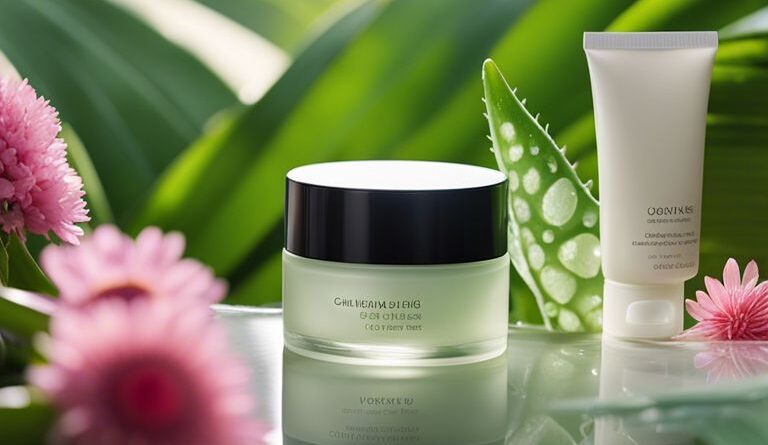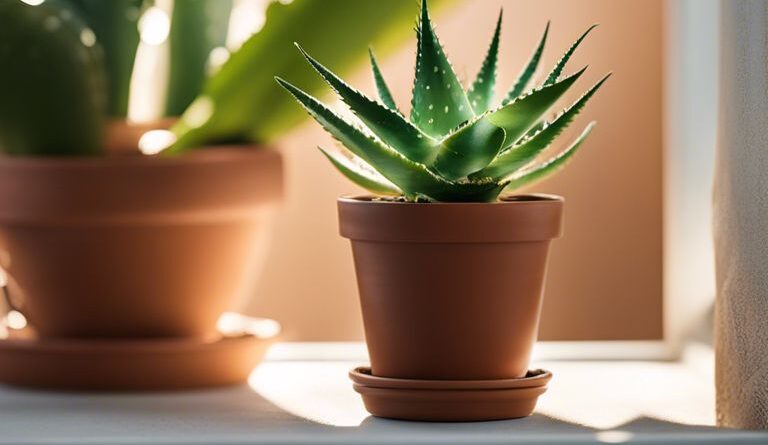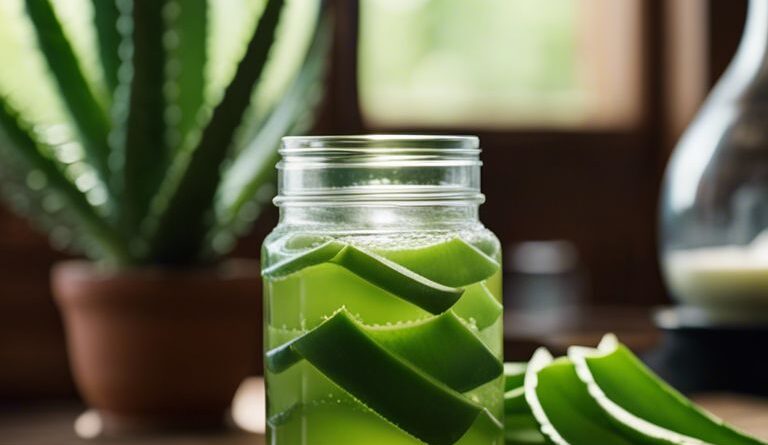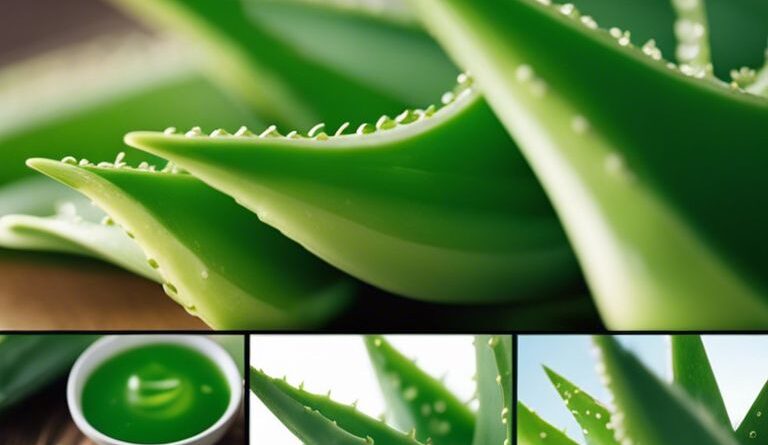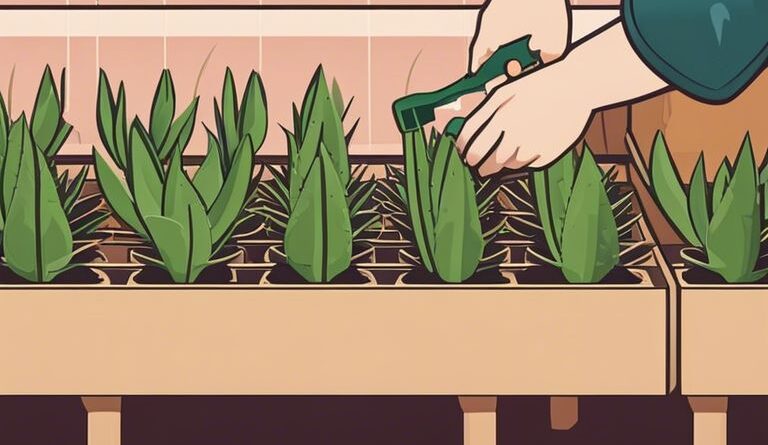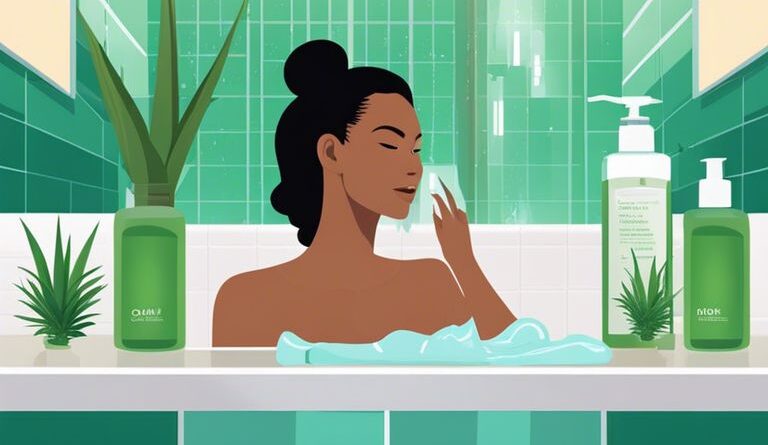

"Organic Aloe Vera Gel from freshly cut 100% Pure Aloe - Big 12oz - HighestQuality, Texas grown, Vegan, Unscented - For Face, Skin, Hair, Sunburn relief"
Global Healing Aloe Vera Bio-Active Organic Leaf Supplement - 200x Concentrate Formula with Highest Concentration of Acemannan - Aloin-Free - Gut Health & Immune Support - 60 Capsules
From sunburn soothers to skincare, aloe vera products are growing in popularity. Today, the industry is worth $625 million. But some aloe vera products on the market have been found to contain no traces of aloe at all. So how can we spot the real aloe vera products? We visited the world’s largest aloe farm in the Dominican Republic, to find out how they harvest, slice up, and juice the legit stuff.
MORE BIG BUSINESS VIDEOS:
How $1.3 Billion Of Counterfeit Goods Are Seized At JFK Airport | Big Business
How 3,000 Pounds Of Tofu Are Handmade A Day | Big Business
Why Starting A Marijuana Business Is So Hard | Big Business
——————————————————
#AloeVera #DominicanRepublic #BusinessInsider
Business Insider tells you all you need to know about business, finance, tech, retail, and more.
Visit us at:
Subscribe:
BI on Facebook:
BI on Instagram:
BI on Twitter:
BI on Snapchat:
Boot Camp on Snapchat:
How 1.5 Million Aloe Vera Leaves Are Harvested A Week | Big Business
Narrator: Making aloe
products takes quick hands. Narrator: A good knife … … and lots of plants. It takes about 20 aloe leaves To make just one gallon
of aloe vera juice. But some aloe products have been found To contain no aloe at all. Tod: It’s so easy to put
out a fake aloe product. So there are all kinds of synthetic gels. Narrator: So how are real
aloe vera products made? And can we spot the legit stuff
in a $625 million industry? We visited the largest aloe
farm in the world to find out. Universal Aloe’s farm
covers 5,000 acres here In the Dominican Republic. While there are hundreds
of types of aloe plants, This farm chose Aloe barbadensis Miller Because it has 20 amino acids. Jason: Minerals, vitamins,
carbohydrates, hormones, And other bioactive substances. Narrator: Once the baby
plants are in the ground, It takes about eight
months for them to mature. About 750 people harvest these fields. They’re dispatched in groups,
harvesting section by section. Narrator: The cut leaves won’t grow back, But the plants will grow new ones. It will take them about a week To harvest just this one area. Narrator: One by one, Workers pick up all the harvested leaves And toss them into a truck. Those leaves head to a processing plant 2 miles up the road. Narrator: The leaves go through a bath Of chlorinated saltwater
To kill off any little
critters from the field That may be hanging around. Then they get trimmed. Narrator: This jiggly fillet Is the gel inside the aloe leaf. That’s what’s used in
real aloe vera juice, Gel, or skincare products. Narrator: To do it, They
need a really good knife. Narrator: They might make it look easy, But filleting takes precision. Narrator: And they have to move fast, Filleting 3,500 leaves a day. Narrator: Many aloe companies
use machines for filleting. Narrator: The leftover
leaf bits go back out Into the field as compost. And the buckets of filets? Those get weighed, then
poured onto this big table. Workers here will inspect them
for any leftover leaf bits, Which they’ll then slice off. Once it’s all clear, the
fillets head to the shredder, Which grinds them into a pure aloe gel. Narrator: At this point,
ascorbic acid is added To extend the shelf life. Narrator: The gel flows
into this spill-proof bag. Narrator: This bag is then vacuum-sealed And put into a bigger metal box. The whole process from
leaf to this container Takes only about three hours. But before the shipment
can leave the factory, Its contents have to be
tested for quality assurance. Narrator: Only when a
container passes the lab tests Can it be released for shipment. These ones are bound for
Rotterdam in the Netherlands. There, the gel will be pumped into bottles
For Forever Living products. But not every bottle of
aloe is made like this. In 2015, ConsumerLab.com tested 10 aloe products for ingredients. Tod: Half of them failed our test. Narrator: A 2016 Bloomberg
investigation found That Walmart, CVS, and
Target’s aloe products contain No evidence of aloe at all. It’s so easy to put out
a fake aloe product. So there are all kinds of synthetic gels. Often you’ll see a word like carbomer. It’s a synthetic gel. And if you see a clear gel, You have no idea if it’s
really aloe or carbomer. Narrator: Most aloe products
aren’t closely regulated By the FDA. That’s because they’re
considered supplements, Or cosmetics, not drugs. So a product can say it contains aloe, But it could mean a range of things: It really does contain aloe fillet, Or it’s the whole leaf ground up And not just that inner fillet. Or it’s a synthetic gel, and
there’s actually no aloe — Which won’t hurt you, But doesn’t have any of the
supposed benefits of aloe. There’s not a lot of regulation Or oversight of aloe products. Narrator: It’s also hard to regulate Because aloe grows naturally
all over the Americas, And its gel has been used
for thousands of years To heal burns and reduce inflammation. The challenge is translating that history To our current rigorous
medical examination.
Narrator: Another problem is there isn’t Clear scientific proof
of aloe’s healing powers. Some studies have shown
it helps soothe burns And speed up healing, While others show no effect on burns. Tod: So it’s not that aloe doesn’t help. The evidence isn’t there right now. Narrator: The outer rind
of the leaf has been found To have a laxative compound called aloin. One study found that it
caused cancer in rats, While another found it
helped with constipation. But the FDA has banned
aloe from being sold As an over-the-counter laxative drug. Tod: There’s no patent on aloe, And so there isn’t a lot
of incentive for companies To be putting lots of money
into clinical studies. They don’t really need to do those studies To get these products on the shelf. Narrator: Still, consumers
worldwide are flocking to aloe As they embrace more natural products. Universal Aloe saw a 30%
increase in demand in 2020. As consumers navigate this growing market, How can we identify the products
made with real aloe vera? Well, Todd says it’s
actually really tricky, But he did have a few suggestions. First, you should always
check the ingredient list. Tod: You want to see aloe.
You want to see it’s first. You really need to be super
careful on the wording, Because if it just says ”leaf,” It could be any part of the leaf. You could be getting the
latex, which you don’t want, Unless you want a laxative effect. Narrator: Look out for tricky
wording like ”100% gel.” That could mean there is 100% gel,
But not all of it is aloe fillet. Jason: So you really need to know What part of the leaf is being made. When they ”aloe gel,” Is it a gel that’s made from
blending up the whole leaf, Or is it truly just pure aloe gel? Narrator: Despite these uncertainties, Experts don’t expect the demand For aloe to dip anytime soon.


